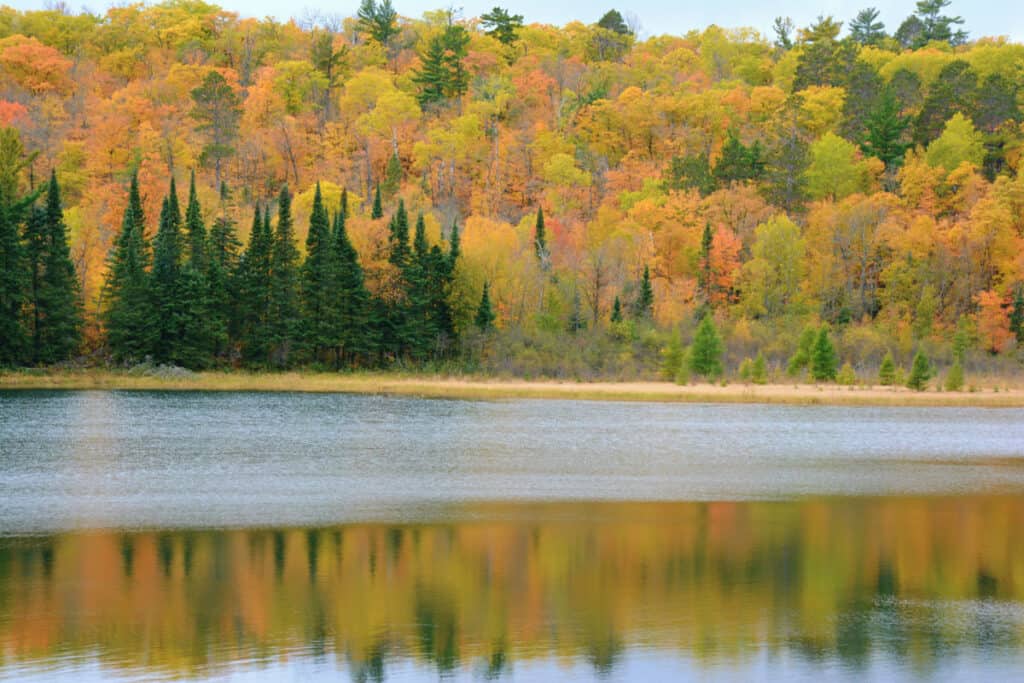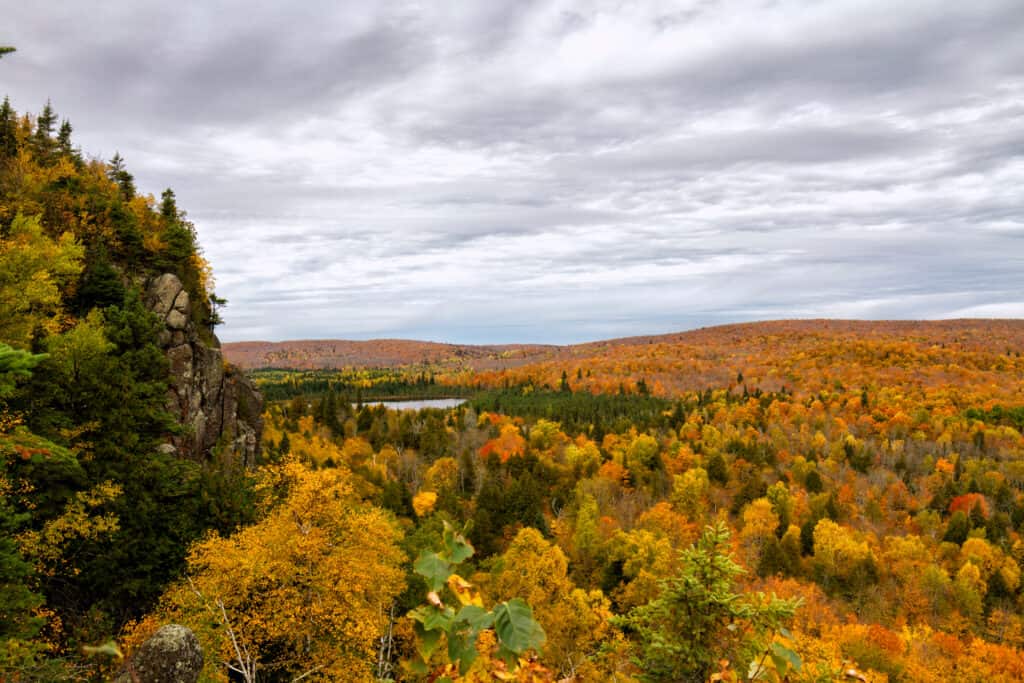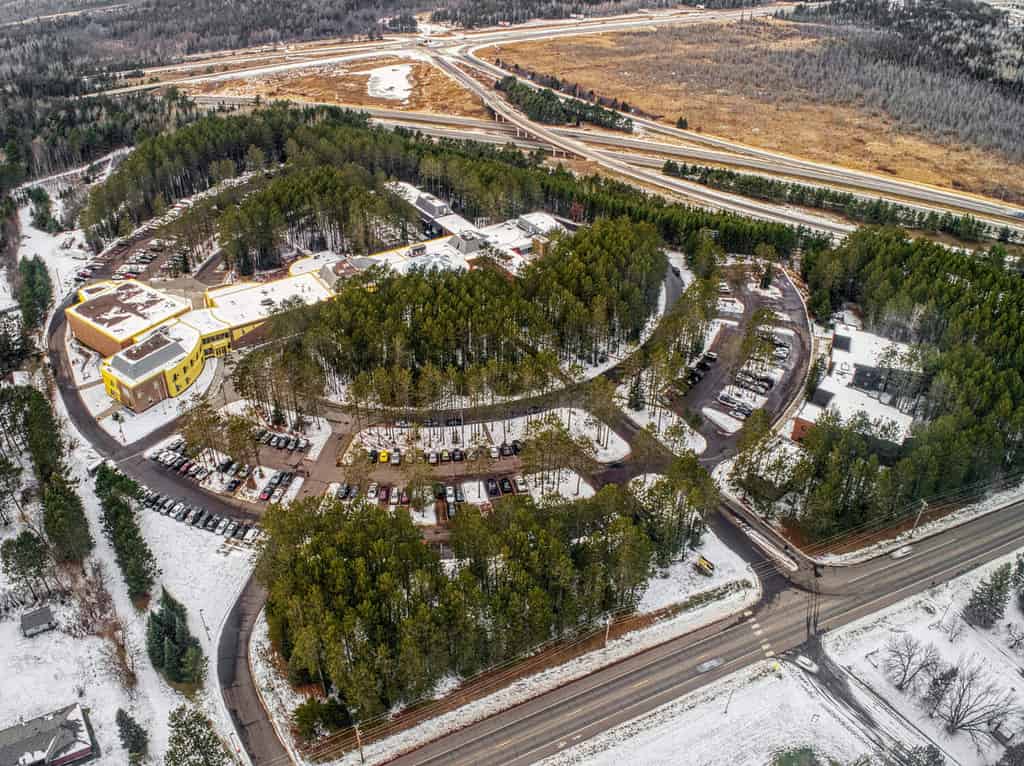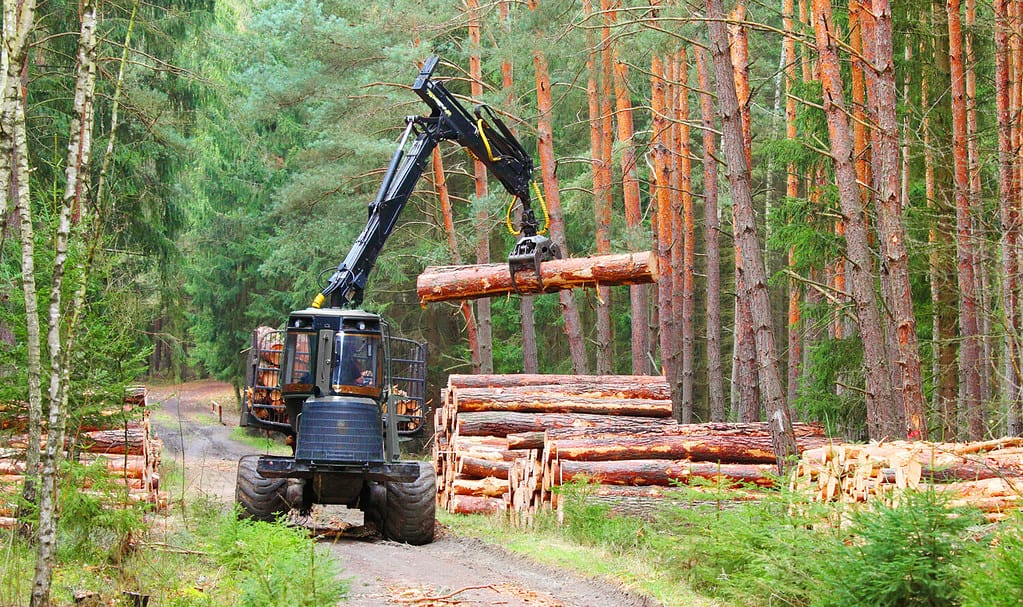Minnesota is a behemoth of an area with 56 million acres and 11,000 lakes. This land is home to picturesque rolling plains, rocky ridges, and recreational areas sprinkled between commercial and residential sections. The generous 10-acre lakefronts have warranted its nickname, “the Land of 10,000 Lakes.”
With its vast array of attractions, it’s no surprise that Minnesota has become such a beloved travel spot! Last year, U.S. News & World Report honored the second-best place in America for its impressive healthcare system and economy, superior education opportunities, unshakable fiscal stability, and breathtaking natural beauty. That explains why investors are drawn to this state since more than 75% of the land here belongs to individuals and businesses in various sectors.
This article covers the top 4 biggest landowners in Minnesota. Read on to learn essential details about them, such as the acres they manage and how they utilize their land.

Minnesota is a behemoth of an area with 56 million acres and 11,000 lakes.
©iStock.com/Jeff439
1. The State – 5,600,000 Acres
A whopping 5.6 million acres in Minnesota is state land. The Department of Natural Resources (DNR) controls more than 90% of it to protect natural resources and expand recreational opportunities for Minnesotans. Most of the property is in the state’s northern regions, including remote areas and wetlands the DNR deemed less valuable than the agricultural tracts in southern Minnesota.
Notably, 45% of the property the DNR administers comprises school trust lands in northern Minnesota. The U.S. Congress gave it to the state in the 1800s to develop regional school districts. Still, a large portion of DNR-managed land is at:
- State parks and recreational centers
- Public water access sites
- State forests and trails
- Wildlife management reserves
- Native Prairie Bank easement areas
It’s common for the DNR to accept land donations from the state’s private landowners. Local government units, sporting clubs, and NGOs can partner with the state body to purchase land. In addition, the DNR expands its territories by acquiring county-managed tax-forfeited properties; as of this writing, it has an additional 2.8 million acres.

A whopping 5.6 million acres in Minnesota is state land.
©Randy Runtsch/Shutterstock.com
2. The Federal Government – 3,800,000 Acres
The federal government owns 615.3 million acres in the United States, and 3.8 million are in Minnesota. The Forest Service controls 81.2% of the federal-owned land, which includes:
Superior National Forest
Nestled in the Arrowhead region of the state, Superior National Forest is among the top 10 most visited national forests. It sits on more than 3 million acres in Lake, Saint Louis, and Cook counties and is filled with different varieties of conifers, including fir, pine, and spruce trees. You’ll also find many deciduous species here, such as maple, aspen, mountain ash, and aquatic plants, like wild rice and water lilies.
Additionally, the Superior National Forest is endowed with many water bodies, which host a vast array of fish species, which include but aren’t limited to:
- Lake trout
- Northern pike
- Rainbow trout
- Brown trout
- Smallmouth bass
- Walleye (Minnesota’s official state fish).
What’s more, countless wildlife species live in this forest. These include more than 300 gray wolves, white-tailed deer, American black bears, Canadian lynxes, and western moose. If you’re a passionate birder, this location is worth exploring as it has over 160 bird species, such as northern waterfowl, bald eagle, and the great northern diver.

Nestled in the Arrowhead region of the state, Superior National Forest is among the top 10 most visited national forests.
©NataliaKuzmina/Shutterstock.com
Recreation at Superior National Forest
With many scenic trails, the Superior National Forest is an excellent destination for hikers. It also boasts many well-maintained campgrounds with clean drinking water. You can pitch your tent anywhere on undeveloped land without paying a dime. But there’s a fee required to enter some parts of the forest, such as The Boundary Waters Canoe Area Wilderness, where you can indulge in the following fun activities:
- Exploring glacial lakes
- Fishing
- Canoeing
- Backpacking
- Dog sledding
- Night sky viewing.
Chippewa National Forest
The US Forest Service also oversees Chippewa National Forest in north-central Minnesota. It’s home to numerous animal and bird species and more than 3,000 historical sites that attract visitors worldwide. Furthermore, this forest has 21 campgrounds, hiking trails, breathtaking byways, and boat accesses.
Besides the US Forest Service, these other agencies manage federal-owned land in Minnesota:
- Fish and Wildlife Service (FWS) – 14.7%
- National Park Service – 4.0%
- Department of Defense (DoD) – 0.06%
- Bureau of Land Management – 0.03%
3. Tribal Reservations – 700,000 acres
Minnesota has 0.7 million acres of tribal-owned land, which belongs to the two American Indian tribes in the state—the Anishinaabe or Chippewa and the Dakota or Sioux. Most of the pieces are in the form of reservations, which the groups retained after signing treaties to cede tracts of their original homelands to the United States.
While the Anishinaabe has seven reservations in Minnesota, the Dakota owns four. The tribes share the land with different counties, including Cook County, Mille Lacs County, St. Louis County and Yellow Medicine County, Redwood County, and Scott County. While tribal councils administer most of these nations, boards of trustees and business committees manage others.

Minnesota has 0.7 million acres of tribal-owned land, which belongs to the Anishinaabe or Chippewa and the Dakota or Sioux.
©Jacob Boomsma/Shutterstock.com
4. The Molpus Woodlands Group – 286,000 Acres
The Molpus Woodlands Group, a renowned timber supply, forest management, and real estate firm, is the largest private landowner in Minnesota, with 286,000 acres to its name. Although this company was established in 1996, its history goes back to 1905 when M. H. Henderson and Richard H. Molpus founded the Henderson-Molpus Mercantile Store, the precursor to Molpus Lumber Company. As years passed, the organization consistently invested in the wood industry, making considerable profits that enabled it to expand.
Today, Dick Molpus, Richard H. Molpus’ grandson, heads the Molpus Woodlands Group. His leadership has seen the company become a leader in the timber and land industry, availing handy services in various facets such as:
- Land acquisitions
- Land management
- Timber marketing and harvesting
- Legal services
- Accounting services
- Recreational leases.

As years passed, the Molpus Woodland Group invested in the wood industry, making considerable profits that enabled it to expand.
©Kletr/Shutterstock.com
Where Are the Molpus Woodlands Group Head Offices?
The Molpus Woodlands Group’s headquarters are in Jackson, Mississippi. The company has expanded its reach and set up offices in many parts of the United States, including Minnesota, Alabama, Michigan, Louisiana, Idaho, Texas, Louisiana, Florida, and Arkansas. Its workforce comprises nearly 80 professionals skilled in marketing, advertising, real estate, communication, manufacturing, and other areas.
Where Is the Home Base of the Molpus Woodlands Group?
The renowned corporation, Molpus Woodlands Group, has its main headquarters in Jackson, Mississippi. Yet it did not stop there! Its reach extends across several states, such as Minnesota, Alabama, Michigan, Louisiana, Idaho, and Texas, with other offices scattered throughout Florida and Arkansas. Boasting an impressive team of 80 professionals specialized in real estate business management services; marketing strategies; communication tactics, advertising campaigns, and more, it’s no surprise that this company is one to look out for.
How to Successfully Acquire Land in Minnesota
Minnesota should be at the top of your list if you are looking for an ideal place to invest in land. This state offers, among other things, a robust economy, undeniable small-time charm, improved local infrastructure, and scenic cities.
Moreover, the weather is favorable year-round, and the job market is favorable. This brings us to the big question, what should you do to clinch an acre or more in Minnesota? Here are a few critical steps to follow when buying land in Minnesota:

Minnesota should be at the top of your list if you are looking for an ideal place to invest in land.
©iStock.com/Susan Rydberg
Decide Why You Need the Land
It would be reckless to purchase land in Minnesota without first figuring out how you’ll use it. Knowing why you need the property lets you determine the best regions to explore once you’re in the market.
For instance, if you’re passionate about hunting, buy land in cities like Park Rapids, Detroit Lakes, Grand Marais, or Bemidji. A parcel near any of the state’s national parks is convenient for investors planning to build recreational facilities.
Furthermore, you should find out an area’s zoning restrictions, weather, amenities, and soil if you plan on building a home and practicing farming on your new land. Which plants do you want to grow? The area should offer favorable conditions for them to thrive. Otherwise, your investment won’t be worth it.
Hire the Best Local Real Estate Agent
When you have determined why you are interested in purchasing land in Minnesota, you must search for a reliable and reasonable local real estate agent to help guide your journey. Recognize that this individual will serve as your companion along the way, so make sure they possess the necessary expertise to effectively assist with obtaining your desired purchase. Spend ample time vetting prospective agents – because when it comes down to it, their mission should be dedicated to safeguarding what is best for you!
Do Your Research and Ask Questions
Most vendors like keeping secrets, whether in Minnesota or other parts of the world. Those putting recreational properties up for sale aren’t even obligated to disclose everything about them. This begs the need for you to work with your real estate agent to research the land and ask a few crucial questions before deciding to buy it. These include:
- Why are you selling the land?
- Are there any land regulations I should know about?
- Are there any extra charges related to owning the property, such as land rates and road improvement levies?
- What’s the chain of title?
- Does the property lack any essential facilities?
- Should I beware of any environmental hazards?
- Are the land’s boundaries marked clearly?
Though some of these questions seem insignificant, their answers may prevent a lifetime of trouble. For example, the Chain of Title lets you know the actual owner of the land. There have been countless cases where someone has tried to sell land belonging to someone else, and you want to avoid falling into their trap.
Consider a Land Appraisal
Having the land you want to buy appraised is a great way to determine whether you’re making the right financial decision. A licensed appraiser identifies the actual value of the property based on the following aspects:
- Location
- Accessibility
- Environmental factors
- Mineral rights
- The layout of the land
- Improvements made to the property over time
- Shape and size of the land
- Land easements and zoning requirements
- Soil quality.
Furthermore, the professional pinpoints the problems the parcel of land has to ensure you pay nothing more than its fair market value. But beware that using them could lead to a cancelation or transaction delay, especially if their report indicates the property is worth less than the seller’s asking price. Also, appraisers in Minnesota charge different amounts for their valuation services, begging the need to confirm you can afford your pick before hiring them.
Secure Your Finances
Even if you find the perfect piece of land that meets all your requirements, the size of your bank account ultimately determines whether you’ll own it. So, ensure you have your finances ready or know where to get the money before scouring Minnesota for your next property investment. Paying for the parcel in cash is most convenient because it increases your bargaining power, and you can close quickly.
Still, you can secure a land mortgage to pay for the property. Various financial institutions are ready to loan you the money to buy land to invest in or build on. But a lot of paperwork is involved, meaning securing the finances might take a while. Besides, there’s no guarantee your mortgage lender will approve your application, especially if you have a low credit score under 580.
Be Patient
Owning a parcel of land in Minnesota calls for patience. Take your time to locate a property that checks every box to avoid wallowing in regrets after making your purchase. Also, think twice before deciding on the land-buying process to prevent mishaps that could cost you later, such as paying for a property whose actual owner is unknown or one under dispute.
Lucrative Ways to Utilize Land in Minnesota
Many landowners in Minnesota have financially benefited from their investments. You can join their league once you secure your piece of land, but only when you utilize it properly. If you’re looking for excellent ideas to explore, consider the following:

Growing different crops is another fantastic way to use your land in Minnesota.
©iStock.com/Olga Seifutdinova
Invest in Real Estate
Building commercial and residential properties on your land could bring huge returns after a few years. Experts say the housing market in the state is healthy, as the average home value has increased by 3.6% over the past year.
Of course, the profit you’ll make from property sales depends on the location of your land. While the home values in cities like Duluth, Brainerd, and Duluth are expected to shoot up, those in Minneapolis will likely decline.
Farm and Rear Livestock
Growing different crops is another fantastic way to use your land in Minnesota. One of the most profitable plants to invest in is soybeans, the state’s top agricultural export commodity. Other options you can try are corn, vegetables, and wheat. Poultry and livestock farming is also worth a shot.
Indeed, these ways can help you get the most out of your land, but they might not always work. We recommend that you extensively research the path you’d like to take, and don’t hesitate to try other investment ideas if they align with your business goals.
Most Prominent Land Investors in Minnesota
Because land appreciates over time, it’s among the best investments you can ever make. As the largest landowners in Minnesota can attest, being in charge of these properties offers much-needed security, not to mention allowing you to protect and develop the natural resources in the state. Like the federal government, land investors must provide recreational services to increase social interaction among Minnesotans and encourage patriotism.
If you’re finally ready to sink your money into a parcel of land in any part of Minnesota, go through the proper channels to own the property. At the same time, avoid commonplace mistakes such as failing to ask for the original title deed and digging up everything about the piece because they could cause major future problems.
Summary of the 4 Largest Landowners in Minnesota
Here is a recap of the four biggest landowners in the state of Minnesota:
| Rank | Landowner | Land Size |
|---|---|---|
| 1 | The State | 5,600,000 acres |
| 2 | The Federal Government | 3,800,000 acres |
| 3 | Tribal Reservations | 700,000 acres |
| 4 | The Molpus Woodlands Group | 286,000 acres |
Who Are the Largest Landowners in the United States?

The U.S. Federal Government is the largest landowner in the U.S., owning approximately 640 million acres.
©Ultima_Gaina/iStock via Getty Images
There are two worth mentioning as relating to the largest landowners in the United States. The first is probably pretty obvious-the U.S. Government. Shared between the National Park Service, the Forest Service, the Bureau of Land Management, the Fish and Wildlife Service, and the Department of Defense, over 640 million acres of U.S. land are owned by the Federal Government. That’s roughly ⅓ of all the land in the United States, which averages out to a total of 2.3 billion acres.
The largest landowner in the United States other than the Federal Government is the Emmerson family, whose patriarch Red Emmerson founded Sierra Pacific Industries in Anderson, California. This company is focused on lumber production, operating a number of sawmills. The Emmerson family owns approximately 2,330,000 acres of land.
The other top largest landowners in the U.S. are:
- John Malone–2,200,000 acres (land committed to conservation)
- The Reed Family–2,100,000 acres (lumber production and forests)
- Ted Turner–2,000,000 acres (ranching and agricultural research)
- Stan Kroenke–1,627,500 acres (farmland, ranches, renewable energy)
The photo featured at the top of this post is © Tony Webster from Portland, Oregon, United States / Creative Commons – License / Original
Thank you for reading! Have some feedback for us? Contact the AZ Animals editorial team.






